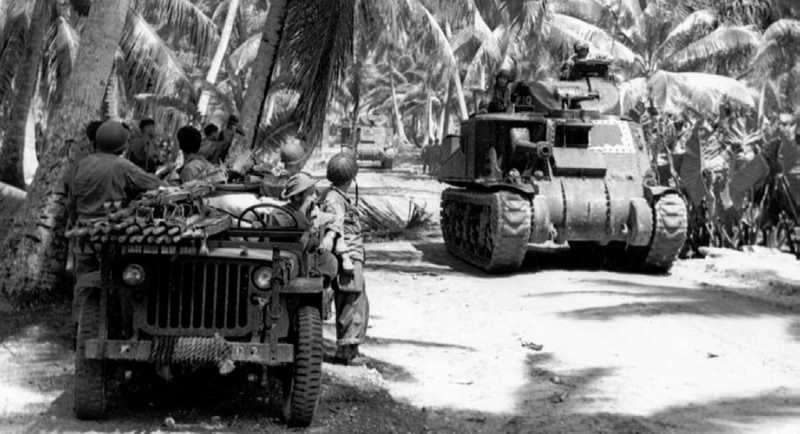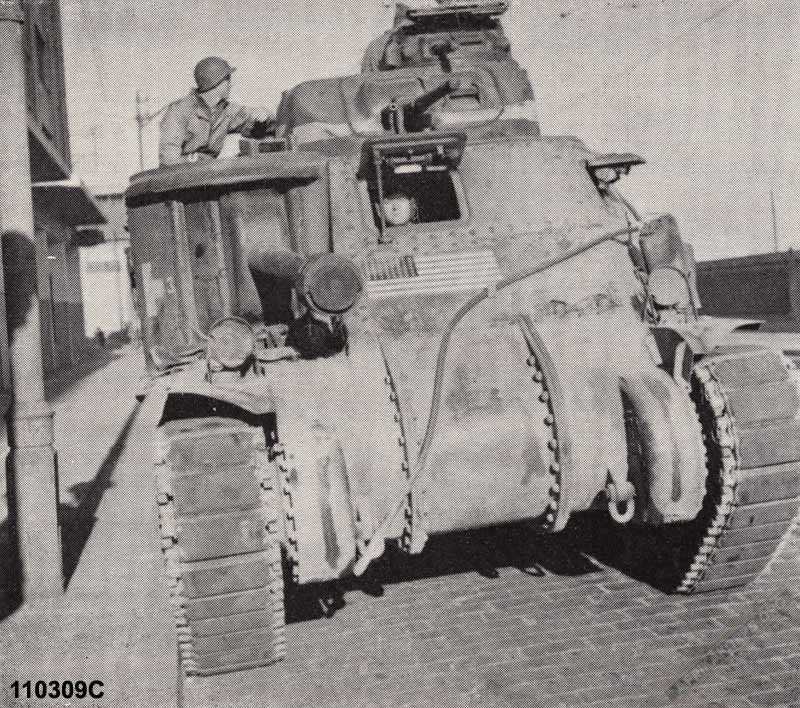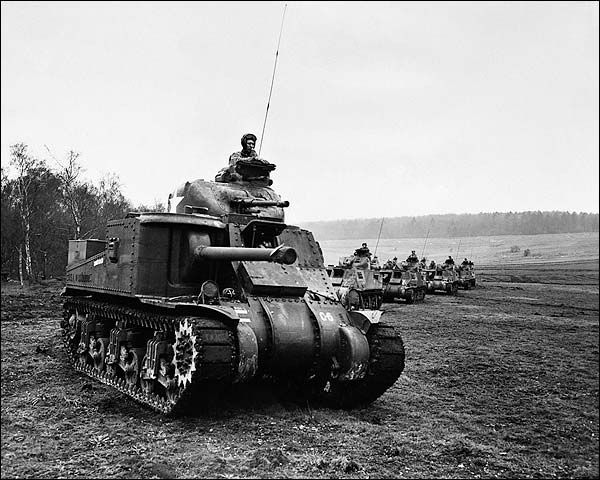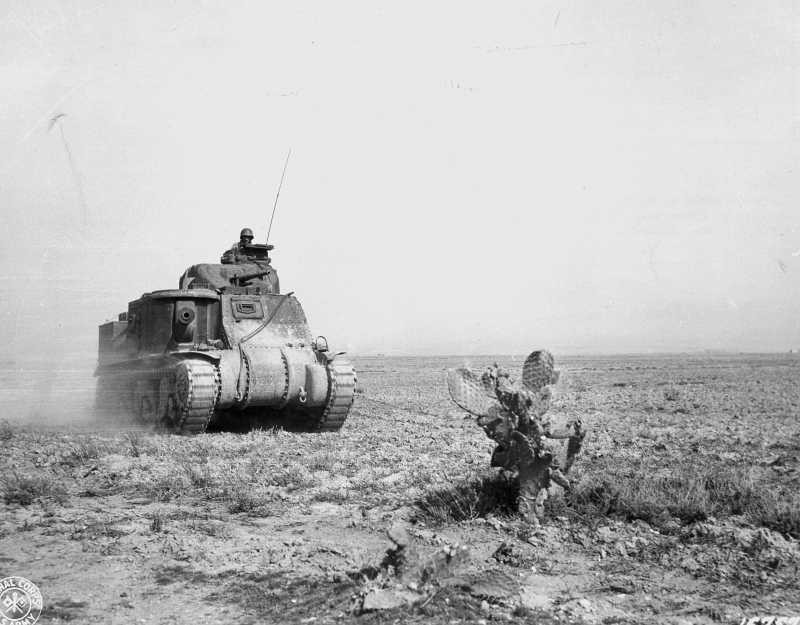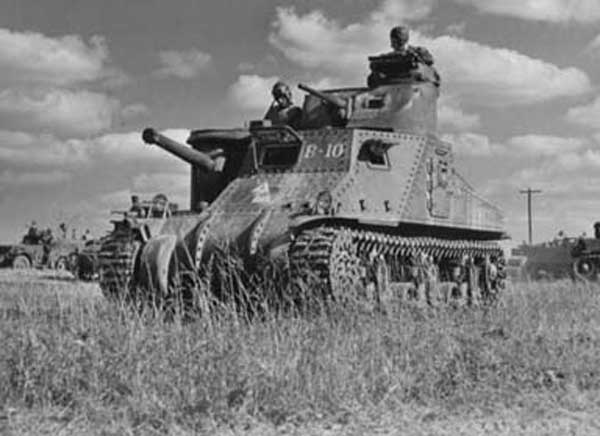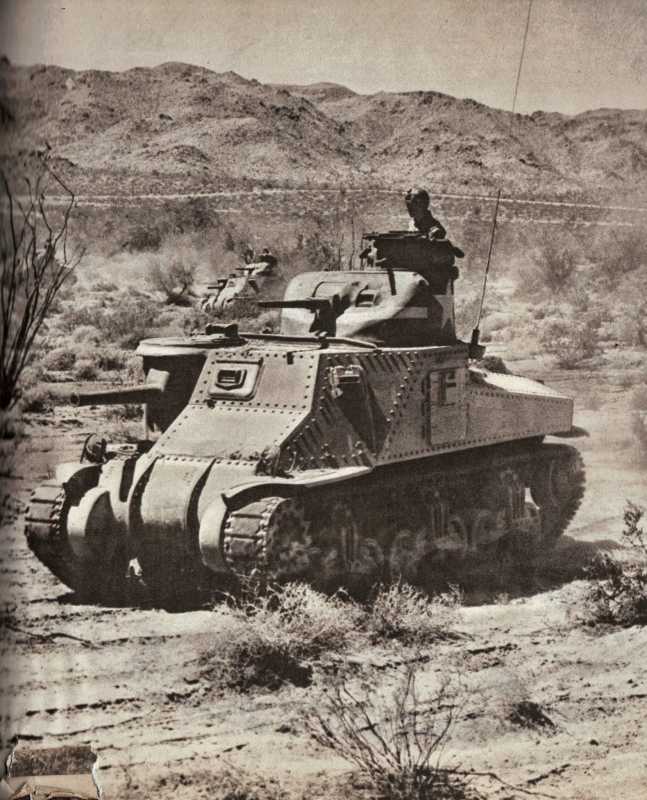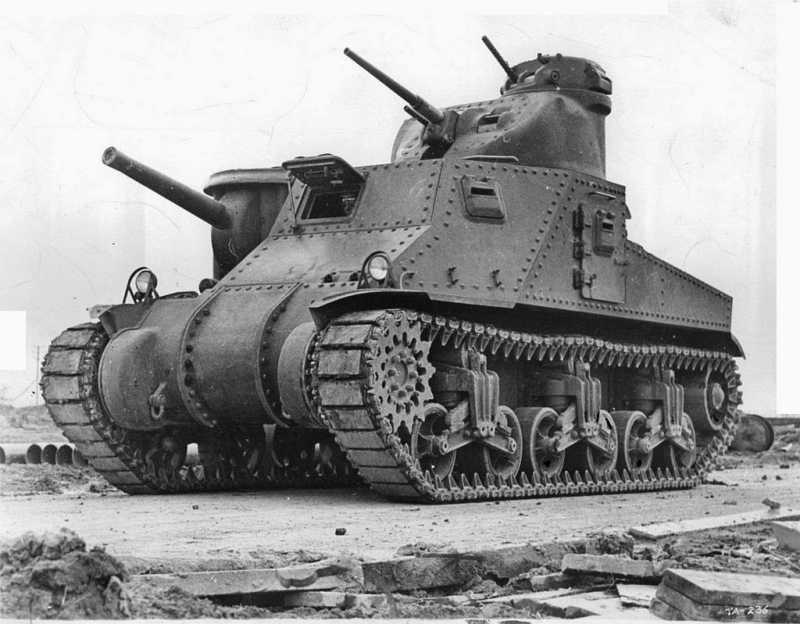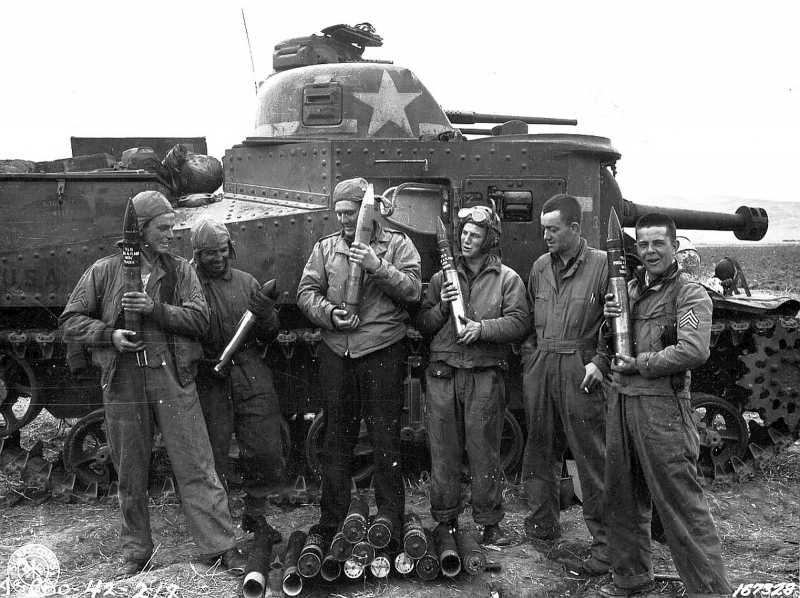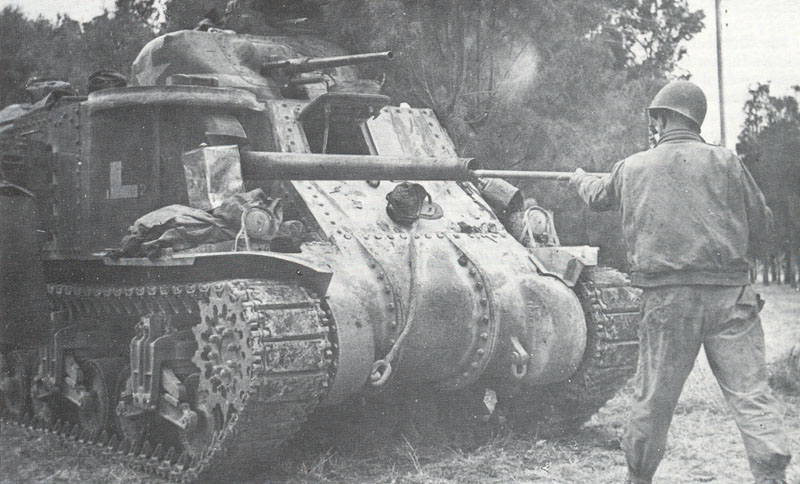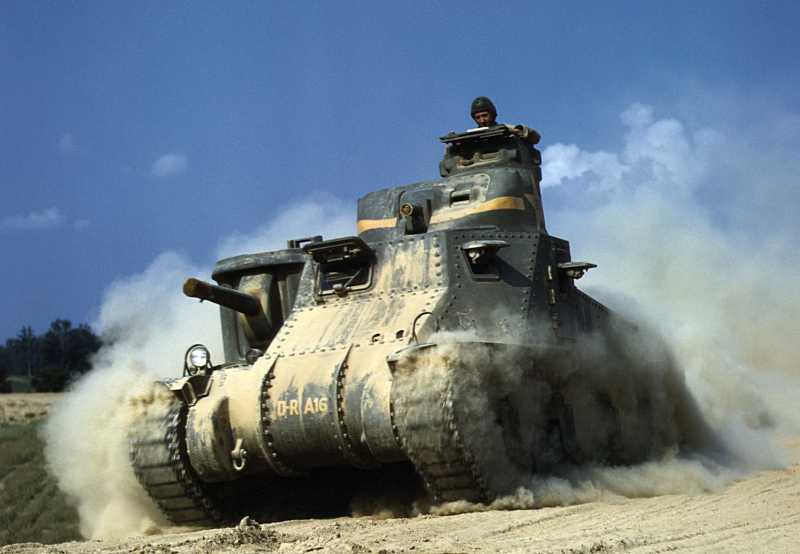-
Modelers Alliance has updated the forum software on our website. We have migrated all post, content and user accounts but we could not migrate the passwords.
This requires that you manually reset your password.
Please click here, http://modelersalliance.org/forums/login to go to logon page and use the "Forgot your Password" option.
You are using an out of date browser. It may not display this or other websites correctly.
You should upgrade or use an alternative browser.
You should upgrade or use an alternative browser.
A PREVIEW OF COMING ATTRACTIONS!(M3 LEE BY TAMIYA)
- Thread starter MrT
- Start date
Sherman 18
Master at Arms
A PREVIEW OF COMING ATTRACTIONS!


A PREVIEW OF COMING ATTRACTIONS!
 for real. flash ain't working on this computer for some reason.
for real. flash ain't working on this computer for some reason.
 for real. flash ain't working on this computer for some reason.
for real. flash ain't working on this computer for some reason.A PREVIEW OF COMING ATTRACTIONS!
The Lee....really?
The Lee....really?

Hawkwrench
Active member
A PREVIEW OF COMING ATTRACTIONS!
Go for it Terry! How's the daughter's builds coming by the way?
Tim
Go for it Terry! How's the daughter's builds coming by the way?
Tim
A PREVIEW OF COMING ATTRACTIONS!
Shoot she has forgot all about models.
:idonno
Go for it Terry! How's the daughter's builds coming by the way?
Tim
Shoot she has forgot all about models.
:idonno
Hawkwrench
Active member
A PREVIEW OF COMING ATTRACTIONS!
Uh oh! It must be a boy thing. "Honey, git me my Winchester"
Tim
Uh oh! It must be a boy thing. "Honey, git me my Winchester"
Tim
A PREVIEW OF COMING ATTRACTIONS!
Naw he's good boy....so far.
:laugh:
Uh oh! It must be a boy thing. "Honey, git me my Winchester"
Tim
Naw he's good boy....so far.
:laugh:
Hawkwrench
Active member
A PREVIEW OF COMING ATTRACTIONS!
Naw he's good boy....so far.
:laugh:[/quote]
Cool beans then!
Tim
Naw he's good boy....so far.
:laugh:[/quote]
Cool beans then!
Tim
A PREVIEW OF COMING ATTRACTIONS!
So you showed him your gun collection then?
Uh oh! It must be a boy thing. "Honey, git me my Winchester"
Tim
Naw he's good boy....so far.
:laugh:
So you showed him your gun collection then?

A PREVIEW OF COMING ATTRACTIONS!
I through these at him and informed him they would fly faster after 10:00 p.m.
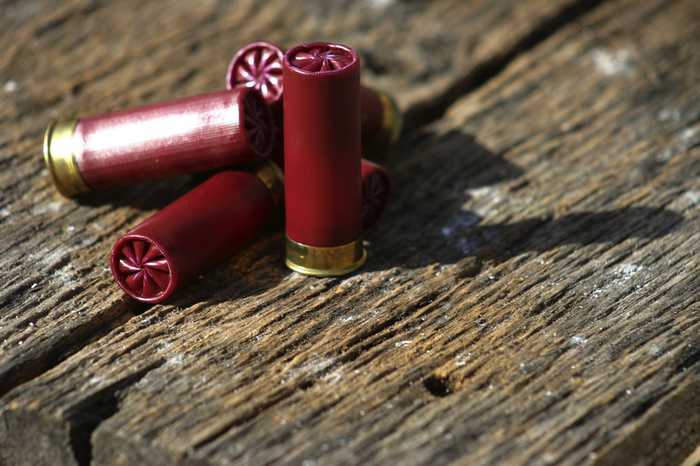

Uh oh! It must be a boy thing. "Honey, git me my Winchester"
Tim
Naw he's good boy....so far.
:laugh:
So you showed him your gun collection then?
I through these at him and informed him they would fly faster after 10:00 p.m.


RichB
Well-known member
A PREVIEW OF COMING ATTRACTIONS!
Well that looks more interesting than the white page I got through the firewall at work.
8 Simple Rules for Dating my Daughter
When I was in high school I used to be terrified of my girlfriend's father, who I believe suspected me of wanting to place my hands on his daughter's chest. He would open the door and immediately affect a good-naturedly murderous expression, holding out a handshake that, when gripped, felt like it could squeeze carbon into diamonds.
Now, years later, it is my turn to be the dad. Remembering how unfairly persecuted I felt when I would pick up my dates, I do my best to make my daughter's suitors feel even worse. My motto: wilt them in the living room and they'll stay wilted all night.
"So," I'll call out jovially. "I see you have your nose pierced. Is that because you're stupid, or did you merely want to APPEAR stupid?"
As a dad, I have some basic rules, which I have carved into two stone tablets that I have on display in my living room.
Rule One: If you pull into my driveway and honk you'd better be delivering a package, because you're sure as heck not picking anything up.
Rule Two: You do not touch my daughter in front of me. You may glance at her, so long as you do not peer at anything below her neck. If you cannot keep your eyes or hands off of my daughter's body, I will remove them.
Rule Three: I am aware that it is considered fashionable for boys of your age to wear their trousers so loosely that they appear to be falling off their hips. Please don't take this as an insult, but you and all of your friends are complete idiots. Still, I want to be fair and open minded about this issue, so I propose this compromise: You may come to the door with your underwear showing and your pants ten sizes too big, and I will not object. However, In order to assure that your clothes do not, in fact, come off during the course of your date with my daughter, I will take my electric staple gun and fasten your trousers securely in place around your waist.
Rule Four: I'm sure you've been told that in today's world, sex without utilizing a "barrier method" of some kind can kill you. Let me elaborate: when it comes to sex, I am the barrier, and I WILL kill you.
Rule Five: In order for us to get to know each other, we should talk about sports, politics, and other issues of the day. Please do not do this. The only information I require from you is an indication of when you expect to have my daughter safely back at my house, and the only word I need from you on this subject is "early."
Rule Six: I have no doubt you are a popular fellow, with many opportunities to date other girls. This is fine with me as long as it is okay with my daughter. Otherwise, once you have gone out with my little girl, you will continue to date no one but her until she is finished with you. If you make her cry, I will make YOU cry.
Rule Seven: As you stand in my front hallway, waiting for my daughter to appear, and more than an hour goes by, do not sigh and fidget. If you want to be on time for the movie, you should not be dating. My daughter is putting on her makeup, a process which can take longer than painting the Golden Gate Bridge. Instead of just standing there, why don't you do something useful, like changing the oil in my car?
Rule Eight: The following places are not appropriate for a date with my daughter: Places where there are beds, sofas, or anything softer than a wooden stool. Places lacking parents, policemen, or nuns. Places where there is darkness. Places where there is dancing, holding hands, or happiness. Places where the ambient temperature is warm enough to induce my daughter to wear shorts, tank tops, midriff T-shirts, or anything other than overalls, a sweater, and a goose down parka zipped up to her chin. Movies with a strong romantic or sexual theme are to be avoided; movies which feature chainsaws are okay. Hockey games are okay.
My daughter claims it embarrasses her to come downstairs and find me attempting to get her date to recite these eight simple rules from memory. I'd be embarrassed too--there are only eight of them, for crying out loud! And, for the record, I did NOT suggest to one of these cretins that I'd have these rules tattooed on his arm if he couldn't remember them. (I checked into it and the cost is prohibitive.) I merely told him that I thought writing the rules on his arm with a ball point might be inadequate--ink washes off--and that my wood burning set was probably a better alternative.
One time, when my wife caught me having one of my daughter's would-be suitors practice pulling into the driveway, get out of the car, and go up to knock on the front door (he had violated rule number one, so I figured he needed to run through the drill a few dozen times) she asked me why I was being so hard on the boy. "Don't you remember being that age?" she challenged.
Of course I remember. Why do you think I came up with the eight simple rules?
Cheers,
Rich
Well that looks more interesting than the white page I got through the firewall at work.
8 Simple Rules for Dating my Daughter
When I was in high school I used to be terrified of my girlfriend's father, who I believe suspected me of wanting to place my hands on his daughter's chest. He would open the door and immediately affect a good-naturedly murderous expression, holding out a handshake that, when gripped, felt like it could squeeze carbon into diamonds.
Now, years later, it is my turn to be the dad. Remembering how unfairly persecuted I felt when I would pick up my dates, I do my best to make my daughter's suitors feel even worse. My motto: wilt them in the living room and they'll stay wilted all night.
"So," I'll call out jovially. "I see you have your nose pierced. Is that because you're stupid, or did you merely want to APPEAR stupid?"
As a dad, I have some basic rules, which I have carved into two stone tablets that I have on display in my living room.
Rule One: If you pull into my driveway and honk you'd better be delivering a package, because you're sure as heck not picking anything up.
Rule Two: You do not touch my daughter in front of me. You may glance at her, so long as you do not peer at anything below her neck. If you cannot keep your eyes or hands off of my daughter's body, I will remove them.
Rule Three: I am aware that it is considered fashionable for boys of your age to wear their trousers so loosely that they appear to be falling off their hips. Please don't take this as an insult, but you and all of your friends are complete idiots. Still, I want to be fair and open minded about this issue, so I propose this compromise: You may come to the door with your underwear showing and your pants ten sizes too big, and I will not object. However, In order to assure that your clothes do not, in fact, come off during the course of your date with my daughter, I will take my electric staple gun and fasten your trousers securely in place around your waist.
Rule Four: I'm sure you've been told that in today's world, sex without utilizing a "barrier method" of some kind can kill you. Let me elaborate: when it comes to sex, I am the barrier, and I WILL kill you.
Rule Five: In order for us to get to know each other, we should talk about sports, politics, and other issues of the day. Please do not do this. The only information I require from you is an indication of when you expect to have my daughter safely back at my house, and the only word I need from you on this subject is "early."
Rule Six: I have no doubt you are a popular fellow, with many opportunities to date other girls. This is fine with me as long as it is okay with my daughter. Otherwise, once you have gone out with my little girl, you will continue to date no one but her until she is finished with you. If you make her cry, I will make YOU cry.
Rule Seven: As you stand in my front hallway, waiting for my daughter to appear, and more than an hour goes by, do not sigh and fidget. If you want to be on time for the movie, you should not be dating. My daughter is putting on her makeup, a process which can take longer than painting the Golden Gate Bridge. Instead of just standing there, why don't you do something useful, like changing the oil in my car?
Rule Eight: The following places are not appropriate for a date with my daughter: Places where there are beds, sofas, or anything softer than a wooden stool. Places lacking parents, policemen, or nuns. Places where there is darkness. Places where there is dancing, holding hands, or happiness. Places where the ambient temperature is warm enough to induce my daughter to wear shorts, tank tops, midriff T-shirts, or anything other than overalls, a sweater, and a goose down parka zipped up to her chin. Movies with a strong romantic or sexual theme are to be avoided; movies which feature chainsaws are okay. Hockey games are okay.
My daughter claims it embarrasses her to come downstairs and find me attempting to get her date to recite these eight simple rules from memory. I'd be embarrassed too--there are only eight of them, for crying out loud! And, for the record, I did NOT suggest to one of these cretins that I'd have these rules tattooed on his arm if he couldn't remember them. (I checked into it and the cost is prohibitive.) I merely told him that I thought writing the rules on his arm with a ball point might be inadequate--ink washes off--and that my wood burning set was probably a better alternative.
One time, when my wife caught me having one of my daughter's would-be suitors practice pulling into the driveway, get out of the car, and go up to knock on the front door (he had violated rule number one, so I figured he needed to run through the drill a few dozen times) she asked me why I was being so hard on the boy. "Don't you remember being that age?" she challenged.
Of course I remember. Why do you think I came up with the eight simple rules?
Cheers,
Rich
A PREVIEW OF COMING ATTRACTIONS!
A friend of mine went to pick up a girl once and he did not even think for a second to do anything "boyishly" stupid. Actually he had her home very early.
When he went in to pick her up her dad was busy cleaning his shotgun and just told him to treat her with respect as he would hate to have to clean the gun twice in a day.
A friend of mine went to pick up a girl once and he did not even think for a second to do anything "boyishly" stupid. Actually he had her home very early.
When he went in to pick her up her dad was busy cleaning his shotgun and just told him to treat her with respect as he would hate to have to clean the gun twice in a day.
iambrb
Well-known member
A PREVIEW OF COMING ATTRACTIONS!
Dagummit, ya' stole my joke!
You should go ahead an get your AR-15 while you still can. I am thinking about buying a few lower receivers for that purpose
Uh oh! It must be a boy thing. "Honey, git me my Winchester"
Tim
Naw he's good boy....so far.
:laugh:
So you showed him your gun collection then?
I through these at him and informed him they would fly faster after 10:00 p.m.


Dagummit, ya' stole my joke!
You should go ahead an get your AR-15 while you still can. I am thinking about buying a few lower receivers for that purpose
A PREVIEW OF COMING ATTRACTIONS!
Ok let's get back on "track" with a little history.
The Medium Tank M3 was an American tank used during World War II. In Britain, the tank was called by two names based on the turret configuration and crew size. Tanks employing US pattern turrets were called the "Lee", named after Confederate General Robert E. Lee. Variants using British pattern turrets were known as "Grant", named after U.S. General Ulysses S. Grant.
Design commenced in July 1940, and the first M3s were operational in late 1941. The U.S. Army needed a medium tank armed with a 75mm gun and, coupled with the United Kingdom's immediate demand for 3,650 medium tanks,the Lee began production by late 1940. The design was a compromise meant to produce a tank as soon as possible. The M3 had considerable firepower and good armor, but had certain serious drawbacks in its general design and shape, such as: a high silhouette, an archaic sponson mounting of the main gun preventing the tank from taking a hull-down position, riveted construction, and poor off-road performance. Its overall performance was not satisfactory and the tank was withdrawn from front line duty — except in the remote areas of the Asian Theater where it was used by British forces until mid-1944 or possibly later — as soon as the M4 Sherman became available in large numbers. In spite of this, it was considered by Hans von Luck (a Colonel in the Wehrmacht and author of Panzer Commander) superior to the best German tank at the time of its introduction, the Panzer IV.
In 1939, the U.S. Army possessed approximately 400 tanks, mostly M2 Light Tanks, with 18 of the to-be-discontinued M2 Medium Tanks as the only ones considered "modern". The U.S. funded tank development poorly during the interwar years, and had no infrastructure for production, little experience in design, and poor doctrine to guide design efforts.
The M2 Medium Tank was typical of armored fighting vehicles (AFVs) many nations produced in 1939. When the U.S. entered the war, the M2 design was already obsolete with a 37 mm gun, 32 mm frontal armor, an impractical number of secondary machine guns and a very high silhouette. The Panzer III and Panzer IV's success in the French campaign led the U.S. Army to immediately order a new medium tank armed with a 75 mm gun in a turret. This would be the M4 Sherman. Until the Sherman reached production, an interim design with a 75 mm gun was urgently needed.
The M3 was the solution. The design was unusual because the main weapon — a larger caliber, low-velocity 75 mm gun — was in an offset sponson mounted in the hull with limited traverse. The sponson mount was necessary because, at the time, American tank plants were incapable of casting a turret big enough to hold the 75mm main gun. A small turret with a lighter, high-velocity 37 mm gun sat on top of the tall hull. A small cupola on top of the turret held a machine gun. The use of two main guns was seen on the French Char B1, the Soviet T-35, and the Mark I version of the British Churchill tank. In each case, two weapons were mounted to give the tanks adequate capability in firing both anti-personnel high explosive ammunition and armor-piercing ammunition for anti-tank combat. The M3 differed slightly from this pattern having a main gun that could fire an armor-piercing projectile at a velocity high enough for efficiently piercing armor, as well as deliver a high-explosive shell that was large enough to be effective. Using a hull mounted gun, the M3 design could be produced faster than a tank featuring a turreted gun. It was understood that the M3 design was flawed, but Britain urgently needed tanks. A draw-back of the sponson mount was that the M3 could not take a hull-down position and use its 75 mm gun at the same time.
The M3 was tall and roomy: the power transmission ran through the crew compartment under the turret cage to the gearbox driving the front sprockets. Steering was by differential braking, with a turning circle of 37 ft (11 m). The vertical volute-sprung suspension (VVSS) units possessed a return roller mounted directly atop the main housing of each of the six suspension units (three per side), designed as self-contained and readily replaced modular units bolted to the hull sides. The turret was power-traversed by an electro-hydraulic system in the form of an electric motor providing the pressure for the hydraulic motor. This fully rotated the turret in 15 seconds. Control was from a spade grip on the gun. The same motor provided pressure for the gun stabilizing system. The 75-mm was operated by a gunner and a loader. Sighting the 75-mm gun used an M1 periscope — with an integral telescope — on the top of the sponson. The periscope rotated with the gun. The sight was marked from zero to 3,000 yd (2,700 m) with vertical markings to aid deflection shooting at a moving target. The gunner laid the gun on target through geared handwheels for traverse and elevation. The 37-mm was aimed through the M2 periscope, though this was mounted in the mantlet to the side of the gun. It also sighted the coaxial machine gun. Two range scales were provided: 0-1,500 yd (1,400 m) for the 37-mm and 0-1,000 yd (910 m) for the machine gun.
Though not at war, the U.S. was willing to produce, sell and ship armored vehicles to Britain. The British had requested that their Matilda II infantry tank and Crusader cruiser tank designs be made by American factories, but this request was refused. With much of their equipment left on the beaches near Dunkirk, the equipment needs of the British were acute. Though not entirely satisfied with the design, they ordered the M3 in large numbers. British experts had viewed the mock-up in 1940 and identified features that they considered flaws — the high profile, the hull mounted main gun, the lack of a radio in the turret (though the tank did have a radio down in the hull), the riveted armor plating (whose rivets tended to pop off inside the interior in a deadly ricochet when the tank was hit by a non-penetrating round), the smooth track design, insufficient armor plating and lack of splash-proofing of the joints. The British desired modifications for the tank they were purchasing. A bustle was to be made at the back of the turret to house the Wireless Set No. 19. The tank was to be given thicker armor plate than the original U.S. design, and the machine gun cupola was to be replaced with a simple hatch. With these modifications accepted, the British ordered 1,250 M3s. The order was subsequently increased with the expectation that when the M4 Sherman was available, it could replace part of the order. Contracts were arranged with three U.S. companies. The total cost of the order was approximately 240 million US dollars, the sum of all British funds in the US; it took the US Lend-Lease act to solve the financial shortfall.
The prototype was completed in March 1941 and production models followed, with the first British-specification tanks produced in July. Both U.S. and British tanks had thicker armor than first planned. The British design required one fewer crew member than the US version due to the radio in the turret. The U.S. eventually eliminated the full-time radio operator, assigning the task to the driver. After extensive losses in Africa and Greece, the British realized that to meet their needs for tanks, both the Lee and the Grant types would need to be accepted.
The U.S. military used the "M" (Model) letter to designate nearly all of their equipment. When the British Army received their new M3 medium tanks from the US, confusion immediately set in between the different M3 medium tank and M3 light tank. The British Army began naming their American tanks after American military figures, although the U.S. Army never used those terms until after the war. M3 tanks with the cast turret and radio setup received the name "General Grant", while the original M3s were called "General Lee", or more usually just "Grant" and "Lee". The M3 brought much-needed firepower to British forces in the North African desert campaign.
The chassis and running gear of the M3 design was adapted by the Canadians for their Ram tank. The hull of the M3 was also used for self-propelled artillery as with the original design of the M7 Priest, of which nearly 3,500 were built, and recovery vehicles.
Overall, the M3 was able to cope with the battlefield of 1942. Its armor and firepower were the equal or superior to most of the threats it faced, especially in the Pacific. Long-range, high velocity guns were not yet common on German tanks in the African theater. However, the rapid pace of tank development meant that the M3 was very quickly outclassed. By mid-1942, with the introduction of the German Tiger I, the up-gunning of the Panzer IV to a long 75-mm gun, and the first appearance in 1943 of the Panther, along with the availability of large numbers of Shermans, the M3 was withdrawn from service in the European Theater.
B)
Ok let's get back on "track" with a little history.
The Medium Tank M3 was an American tank used during World War II. In Britain, the tank was called by two names based on the turret configuration and crew size. Tanks employing US pattern turrets were called the "Lee", named after Confederate General Robert E. Lee. Variants using British pattern turrets were known as "Grant", named after U.S. General Ulysses S. Grant.
Design commenced in July 1940, and the first M3s were operational in late 1941. The U.S. Army needed a medium tank armed with a 75mm gun and, coupled with the United Kingdom's immediate demand for 3,650 medium tanks,the Lee began production by late 1940. The design was a compromise meant to produce a tank as soon as possible. The M3 had considerable firepower and good armor, but had certain serious drawbacks in its general design and shape, such as: a high silhouette, an archaic sponson mounting of the main gun preventing the tank from taking a hull-down position, riveted construction, and poor off-road performance. Its overall performance was not satisfactory and the tank was withdrawn from front line duty — except in the remote areas of the Asian Theater where it was used by British forces until mid-1944 or possibly later — as soon as the M4 Sherman became available in large numbers. In spite of this, it was considered by Hans von Luck (a Colonel in the Wehrmacht and author of Panzer Commander) superior to the best German tank at the time of its introduction, the Panzer IV.
In 1939, the U.S. Army possessed approximately 400 tanks, mostly M2 Light Tanks, with 18 of the to-be-discontinued M2 Medium Tanks as the only ones considered "modern". The U.S. funded tank development poorly during the interwar years, and had no infrastructure for production, little experience in design, and poor doctrine to guide design efforts.
The M2 Medium Tank was typical of armored fighting vehicles (AFVs) many nations produced in 1939. When the U.S. entered the war, the M2 design was already obsolete with a 37 mm gun, 32 mm frontal armor, an impractical number of secondary machine guns and a very high silhouette. The Panzer III and Panzer IV's success in the French campaign led the U.S. Army to immediately order a new medium tank armed with a 75 mm gun in a turret. This would be the M4 Sherman. Until the Sherman reached production, an interim design with a 75 mm gun was urgently needed.
The M3 was the solution. The design was unusual because the main weapon — a larger caliber, low-velocity 75 mm gun — was in an offset sponson mounted in the hull with limited traverse. The sponson mount was necessary because, at the time, American tank plants were incapable of casting a turret big enough to hold the 75mm main gun. A small turret with a lighter, high-velocity 37 mm gun sat on top of the tall hull. A small cupola on top of the turret held a machine gun. The use of two main guns was seen on the French Char B1, the Soviet T-35, and the Mark I version of the British Churchill tank. In each case, two weapons were mounted to give the tanks adequate capability in firing both anti-personnel high explosive ammunition and armor-piercing ammunition for anti-tank combat. The M3 differed slightly from this pattern having a main gun that could fire an armor-piercing projectile at a velocity high enough for efficiently piercing armor, as well as deliver a high-explosive shell that was large enough to be effective. Using a hull mounted gun, the M3 design could be produced faster than a tank featuring a turreted gun. It was understood that the M3 design was flawed, but Britain urgently needed tanks. A draw-back of the sponson mount was that the M3 could not take a hull-down position and use its 75 mm gun at the same time.
The M3 was tall and roomy: the power transmission ran through the crew compartment under the turret cage to the gearbox driving the front sprockets. Steering was by differential braking, with a turning circle of 37 ft (11 m). The vertical volute-sprung suspension (VVSS) units possessed a return roller mounted directly atop the main housing of each of the six suspension units (three per side), designed as self-contained and readily replaced modular units bolted to the hull sides. The turret was power-traversed by an electro-hydraulic system in the form of an electric motor providing the pressure for the hydraulic motor. This fully rotated the turret in 15 seconds. Control was from a spade grip on the gun. The same motor provided pressure for the gun stabilizing system. The 75-mm was operated by a gunner and a loader. Sighting the 75-mm gun used an M1 periscope — with an integral telescope — on the top of the sponson. The periscope rotated with the gun. The sight was marked from zero to 3,000 yd (2,700 m) with vertical markings to aid deflection shooting at a moving target. The gunner laid the gun on target through geared handwheels for traverse and elevation. The 37-mm was aimed through the M2 periscope, though this was mounted in the mantlet to the side of the gun. It also sighted the coaxial machine gun. Two range scales were provided: 0-1,500 yd (1,400 m) for the 37-mm and 0-1,000 yd (910 m) for the machine gun.
Though not at war, the U.S. was willing to produce, sell and ship armored vehicles to Britain. The British had requested that their Matilda II infantry tank and Crusader cruiser tank designs be made by American factories, but this request was refused. With much of their equipment left on the beaches near Dunkirk, the equipment needs of the British were acute. Though not entirely satisfied with the design, they ordered the M3 in large numbers. British experts had viewed the mock-up in 1940 and identified features that they considered flaws — the high profile, the hull mounted main gun, the lack of a radio in the turret (though the tank did have a radio down in the hull), the riveted armor plating (whose rivets tended to pop off inside the interior in a deadly ricochet when the tank was hit by a non-penetrating round), the smooth track design, insufficient armor plating and lack of splash-proofing of the joints. The British desired modifications for the tank they were purchasing. A bustle was to be made at the back of the turret to house the Wireless Set No. 19. The tank was to be given thicker armor plate than the original U.S. design, and the machine gun cupola was to be replaced with a simple hatch. With these modifications accepted, the British ordered 1,250 M3s. The order was subsequently increased with the expectation that when the M4 Sherman was available, it could replace part of the order. Contracts were arranged with three U.S. companies. The total cost of the order was approximately 240 million US dollars, the sum of all British funds in the US; it took the US Lend-Lease act to solve the financial shortfall.
The prototype was completed in March 1941 and production models followed, with the first British-specification tanks produced in July. Both U.S. and British tanks had thicker armor than first planned. The British design required one fewer crew member than the US version due to the radio in the turret. The U.S. eventually eliminated the full-time radio operator, assigning the task to the driver. After extensive losses in Africa and Greece, the British realized that to meet their needs for tanks, both the Lee and the Grant types would need to be accepted.
The U.S. military used the "M" (Model) letter to designate nearly all of their equipment. When the British Army received their new M3 medium tanks from the US, confusion immediately set in between the different M3 medium tank and M3 light tank. The British Army began naming their American tanks after American military figures, although the U.S. Army never used those terms until after the war. M3 tanks with the cast turret and radio setup received the name "General Grant", while the original M3s were called "General Lee", or more usually just "Grant" and "Lee". The M3 brought much-needed firepower to British forces in the North African desert campaign.
The chassis and running gear of the M3 design was adapted by the Canadians for their Ram tank. The hull of the M3 was also used for self-propelled artillery as with the original design of the M7 Priest, of which nearly 3,500 were built, and recovery vehicles.
Overall, the M3 was able to cope with the battlefield of 1942. Its armor and firepower were the equal or superior to most of the threats it faced, especially in the Pacific. Long-range, high velocity guns were not yet common on German tanks in the African theater. However, the rapid pace of tank development meant that the M3 was very quickly outclassed. By mid-1942, with the introduction of the German Tiger I, the up-gunning of the Panzer IV to a long 75-mm gun, and the first appearance in 1943 of the Panther, along with the availability of large numbers of Shermans, the M3 was withdrawn from service in the European Theater.
B)
Sherman 18
Master at Arms
Of course I'll be following :Hiay
Tracks...




